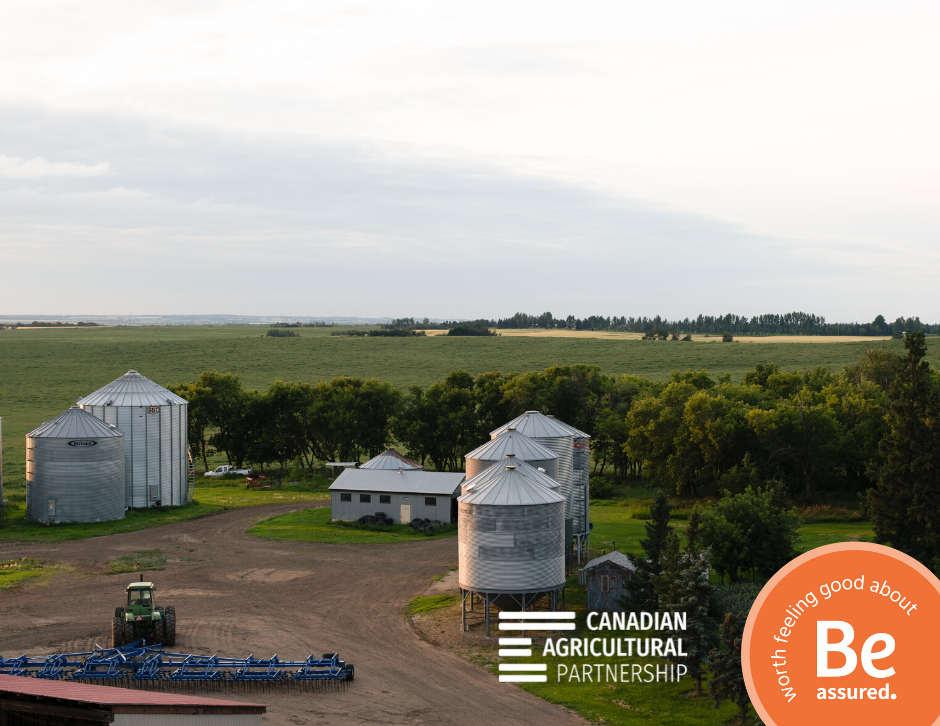Farming on the Cutting Edge: How Alberta farmers are using technology to produce better & more food
Dairy farmer Jason Crozier isn’t certain what visitors expect to see when they pull up to take a tour of his farm. “I think a lot people have the dream of a little red barn in the back of their minds,” says Jason Crozier, fifth-generation farmer and co-owner of his family farm, Chelsen Dairies, in Sturgeon County north of Edmonton. The Crozier family built the original homestead in the 1890s. Today, he and his brother Brett work there full-time, tending to the farm’s 400 cows and growing their feed on 1,500 acres of land. “When people from the city come to look at my farm they’re blown away by what’s going on,” he says.
What they find is a setup as glisteningly high-tech as the setting is pretty and pastoral. In an airy and spacious barn, cows wander freely, entering roomy stalls at their leisure to be milked by robots. The three robotic milking machines handle 55 cows per robot per hour. Automated machines push and recirculate the feed in the animals’ troughs, so there is always something fresh and clean to eat. Massive high-efficiency fans circulate and cool the air, while a special curtain-insulation system keeps temperatures constant, trapping body heat and removing the need for fossil-fuel-based heating or cooling at any time of year. Instead of traditional plate coolers for chilling the milk, strategically placed cold-water pipes do the job for huge energy savings, while also supplying drinking water to the cows.
Labour is down and milk production is up. “We built such a comfortable milk facility and the cows are really happy where they are,” says Crozier.
Crozier’s farm may sound ahead of the curve, but in reality most Alberta farms, especially large-scale operations, have embraced similar levels of technological advancement to cut costs, improve efficiency and increase yield. While the main reason to implement any new technology is usually the bottom line, there are other spinoff benefits. For instance, more and better products for the consumer, less waste and less energy consumption overall.
“Yields have steadily increased and we’re doing [a] better job of managing our soil to grow that crop,” says Colin Bergstrom, Alberta agronomy lead, focused on grain, for agri-food multinational Cargill. Bergstrom has seen farming tech evolve rapidly over the last two decades, “We’re definitely moving the needle in a good direction with the application of technology.”
When done right, implementing new technology is a win-win, says grain farmer Chris Allam. His family’s Allam Farms grows wheat, canola, peas, fava beans, barley, hay and legumes on 15,000 acres split between Strathcona and Sturgeon County. “Any time you can use something that will make you more efficient and accurate, and ultimately save dollars, that in turn saves the environment,” says Allam, “Our farm is focused on stewardship and we realize that this land has to be there for future generations. So, a lot of those technology decisions mesh with all of our goals, be they environmental or financial.”
On Allam’s farm, the tech innovation starts when the seed hits the scale. Digitized measuring devices allow him to dole out seed, as well as fertilizer and pesticides, with laser precision. This translates to less waste, and less use overall. Take pesticides for example, “The applications back then were very ‘a glug of a jug,’” says Allam, “Now you’re able to fill a sprayer tank with 1,000 gallons and end up within feet of where you wanted,” he says.
Computerized sprayers also help cut waste by segmenting fields using GPS data and other smart features to avoid overlap. In the past, farmers would have to do imprecise eyeball passes of their fields, using fence posts or markers, and there would always be some duplication. “You’re trying to drive straight and it sounds easy but it’s not, and you get tired after doing thousands of acres,” says Allam, “So being accurate has been just huge. It can add up to some really big numbers.” Driving in straight lines and efficient patterns also saves fuel.
Come harvest time, Allam can measure his yield down to the granule thanks to computer-equipped combines that take detailed measurements as they go. The blades also adjust automatically, depending on the texture of the crop, while self-driving features change speed and gear as the land undulates to save gas. Inside his processing facility, the grain dryers are automated and remote-controllable. The list goes on.
What technological innovations might be next for Alberta farmers? Greater use of connectivity and automation, detailed satellite imaging, AI-assisted data analysis, drone imaging—for now, it’s hard to say which will deliver a solid return on investment. One thing is certain, it’s all in the interest of bringing more and better food to Albertan’s supper table. As Allam puts it, “The more I farm, the better food you eat,” he says, “And if I can perfect my craft, your food quality goes up.” Little red barn or no.
This content was produced by Content Works, Postmedia’s custom content studio. The views expressed in this document are those of Taste Alberta and do not necessarily reflect the provincial and federal governments.
Credits:
Written by: Kay Miller
Oct 22, 2019




